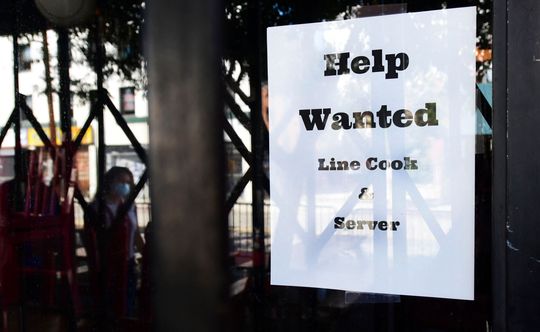S&P 500 closes out August with best performance year-to date since since 1997
U.S. stocks ended slightly lower Tuesday, but closed out August with monthly gains, while the S&P 500 index has ended the first eight months of the year with its strongest year-to-date gain since 1997.
What did major indexes do?
- The Dow Jones Industrial Average DJIA, -0.11% declined 39.11 points, or 0.1%, at 35,360.73.
- The S&P 500 SPX, -0.13% dipped 6.11 points, or 0.1%, to 4,522.68.
- The Nasdaq Composite COMP, -0.04% slipped 6.65 points, or less than 0.1%, to 15,259.24.
On Monday, the S&P 500 booked its 53rd record close of 2021 and the Nasdaq Composite also finished at an all-time high. The S&P 500 ended the first eight months of the year with its strongest year-to-date gain since 1997.
For the month, the Dow rose 1.2%, while the S&P 500 climbed 2.9% and the Nasdaq gained 4%. The small-cap Russell 2000 RUT, +0.34% saw 2.1% gain in August.
What drove the market?
Stocks closed lower Tuesday, as investors looked ahead to U.S. jobs data for August coming Friday, where they might find clues as to when the Federal Reserve may begin tapering its bond purchases which have helped to support markets during the pandemic.
“We’re entering a very weak seasonal period of the year,” said Matt Forester, chief investment officer of Lockwood Advisors at BNY Mellon Pershing, in a phone interview Tuesday. “If we’re going to get some kind of a modest pullback in equities, the time seems to be ripe for that.”
The August jobs report on Friday will give markets their next major chance to estimate when and how the Federal Reserve will begin tapering its $120 billion of monthly bond purchases.
“We are looking for two more months of strong jobs reports — four reports make a trend — for tapering to begin on a November or December timeline,” said Lauren Goodwin, economist and portfolio strategist at New York Life Investments, in a note to clients.
“The biggest single risk to this outlook in our view is widespread school closures. If schools don’t open for in-person learning, the constraint on labor supply could contribute to the wage-price spiral investors fear,” she said.
Inflationary pressure and heightened concerns over Covid-19 infection rates appear to be troubling consumers, John Carey, director of equity income at Amundi U.S., said in a phone interview Tuesday.
The Conference Board said its closely followed index of consumer confidence slid to a six-month low at 113.8 this month from a revised 125.1 in July, reflecting concerns about the spread of the delta variant of the coronavirus that causes COVID-19.
Analysts have noted that high-frequency data has indicated that declines in confidence have yet to translate into a sharp slowdown in activity.
“Consumers are increasingly aware of the near-term risks to the economic recovery created by rising prices and the COVID-19 resurgence. The recent moderation in the collective consumer mood notwithstanding, confidence is still relatively high and at a level consistent with solid consumer spending,” said Jim Baird, chief investment officer at Plante Moran Financial Advisors.
Meanwhile, the market provides only a “slightly positive” equity risk premium, according to Amundi’s Carey. “There’s not much room for error” should earnings falter or interest rates rise, he said. “All of a sudden you slip into a negative situation and people might be quite startled.”
In other U.S. economic data, the Chicago purchasing managers index dropped to 66.8 in August from a previous reading of 73.4. And home prices rose 18.6% annually in June, up from a 16.8% increase in May, according to the S&P CoreLogic Case-Shiller national home price index.
“So far I’d say the markets have really soft-pedaled the inflation story,” said Forester. “If we saw inflation continue to stay persistently high, at some point in time the market is going to have to adjust to a new reality.”
Which companies were in focus?
- Shares of Zoom Video Communications Inc. ZM, -16.69% tumbled 16.7%, after the videoconferencing company delivered a tepid third-quarter outlook late Monday, though it second-quarter results topped expectations.
- Robinhood Markets Inc. HOOD, +1.56% shares edged up 1.6%, bouncing after coming under pressure Monday following remarks by Securities and Exchange Commission Chairman Gary Gensler. Wall Street’s top regulator told Barron’s that a ban on payment for order flow “is on the table.” Payment for order flow is a practice where market makers pay brokers to execute their orders. Critics contend it carries a conflict of interest that’s detrimental to individual investors.
- Shares of Designer Brands Inc. DBI, -8.29% fell 8.3% after the parent of footwear retailer DSW delivered results that blew past second-quarter earnings forecasts.
How did other markets fare?
- The yield on the 10-year Treasury note TMUBMUSD10Y, 1.333% rose almost 2 basis points to 1.303%. Yields and debt prices move in opposite directions.
- The ICE U.S. Dollar Index DXY, 0.12%, a measure of the currency against a basket of six major rivals, was little changed.
- Oil futures ended lower as Gulf Coast refineries struggled to reopen following Hurricane Ida, with the U.S. benchmark CL00, 0.47% falling 1% to settle at $68.50 a barrel. Gold futures GC00, -0.14% ended 3% higher, settling at $1,818.10 an ounce.
- In Europe, the FTSE 100 UK:UKX and the pan-European Stoxx 600 XX:SXXP both closed 0.4% lower.
- Asian stocks managed to eke out gains, with Tokyo’s Nikkei 225 NIK, 1.27% rising 1.1% as the Hong Kong Hang Seng Index HSI, -0.15% ticked up 1.3% and the Shanghai Composite SHCOMP, -0.67% edged 0.5% higher

